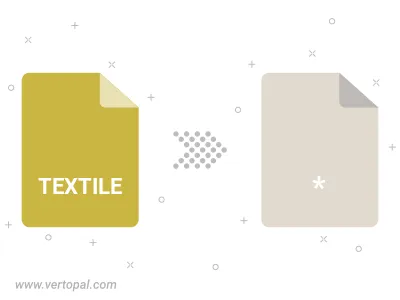TEXTILE Converter
Convert TEXTILE markup documents to a variety of formats, edit and optimize documents online and free.

The TEXTILE file extension, an acronym for Textile Markup Language, is a lightweight markup language developed by Dean Allen in 2002. It converts plain text into structured HTML, making it useful for writing articles, forum posts, and documentation. Textile is known for its simplicity and readability, and it has influenced the development of other markup languages like Markdown.
Select the TEXTILE markup document you need to convert from your system.
Pick the output format option available for your TEXTILE file.
Allow the converter to finish, then download the file immediately.

Activate Vertopal CLI to begin converting TEXTILE markup document.